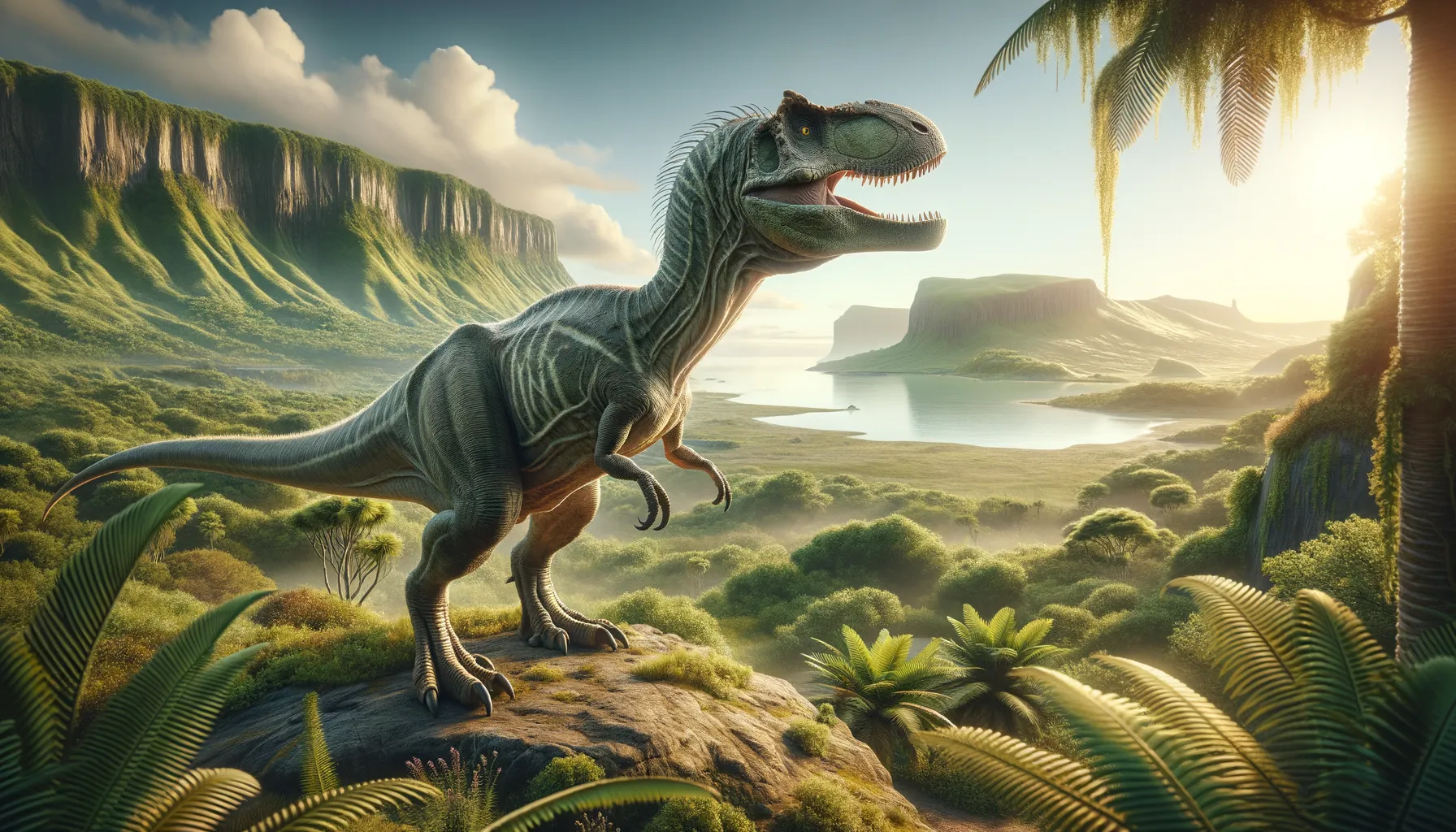
Thecospondylus
Enigmatic predator of the past.
Period
Cretaceous
Length
About 7 to 9 meters long.
Height
Approximately 2 to 3 meters tall.
Weight
Roughly 500 to 700 kilograms.
Thecospondylus was a theropod dinosaur known for its unique vertebrae, which sparked interest among paleontologists despite the limited fossil evidence. This dinosaur from the Cretaceous Period was likely bipedal and carnivorous, dwelling in regions that are now part of England. Although much remains unknown due to fragmentary finds, Thecospondylus contributes valuable insights into dinosaur biodiversity and evolution.
Diet
Thecospondylus was likely a carnivore, preying on smaller dinosaurs and possibly scavenging. Its diet primarily consisted of meat, which it likely hunted or found during its exploratory forays.
Hunting
As a bipedal hunter, Thecospondylus may have relied on stealth and surprise to capture its prey. Given its moderate speed, it probably preferred ambushing rather than chasing its targets.
Environmental challenges
Thecospondylus lived during a time when the environment was changing, with shifts in climate and sea levels. These changes would have affected the availability of prey and habitat, challenging its survival. Competition with other predators and fluctuating food sources would have required adaptability and resourcefulness.
Speed
Moderate; not particularly fast.
Lifespan
Estimated to be around 20-30 years.
First discovery
Discovered in 1888 by Harry Seeley in England.
Fun Facts
- Thecospondylus was named by the famous paleontologist Harry Seeley in 1882, making it a historical figure in dinosaur studies.
- This dinosaur is known mainly from a single fossil vertebra, which makes it a bit of a mystery to paleontologists.
- The name Thecospondylus means 'sheath vertebra', a nod to the unique structure of its known fossil.
- Thecospondylus lived during the early Cretaceous period, roughly 140 million years ago.
- The exact classification of Thecospondylus is uncertain, which adds an element of intrigue to its story.
- Despite being largely unknown, Thecospondylus plays an important role in understanding dinosaur evolution based on its fossil's characteristics.
- The fossil of Thecospondylus was discovered in England, making it part of the rich dinosaur heritage of the UK.
Growth and Development
Thecospondylus likely experienced rapid growth in its early years, reaching maturity relatively quickly. This growth might have been critical for survival, allowing juveniles to escape predation. The development of unique vertebral structures suggests evolutionary adaptations over generations.
Habitat
The habitat of Thecospondylus likely included forests and open plains near water sources. These environments would have provided cover for hunting and access to various prey animals. Seasonal changes might have influenced its movement patterns and resource usage.
Interaction with other species
Competition with other carnivorous dinosaurs would have been a significant aspect of its interactions. It coexisted with various herbivores, both as potential prey and competitors for food resources. Thecospondylus might have had a role in maintaining the ecological balance by controlling herbivore populations.
Natural lifespan
Its natural lifespan is believed to have ranged up to 30 years.
Reproduction
Like other theropods, Thecospondylus likely laid eggs, with nesting behaviors possibly similar to modern birds. The care of hatchlings is speculative, but instincts for protection and nurturing might have been present.
Social behaviour
There is little evidence about its social behavior, but solitary hunting is a possibility. It might have formed temporary groups or pairs, especially during the breeding season, to ensure the continuation of the species. Vocal and visual signals could have played a role in individual interactions.
Fossil locations
Thecospondylus fossils have primarily been found in England, providing insight into its distribution. The limited number of fossils makes it challenging to fully reconstruct its history. Ongoing research may yield further discoveries across Europe.
